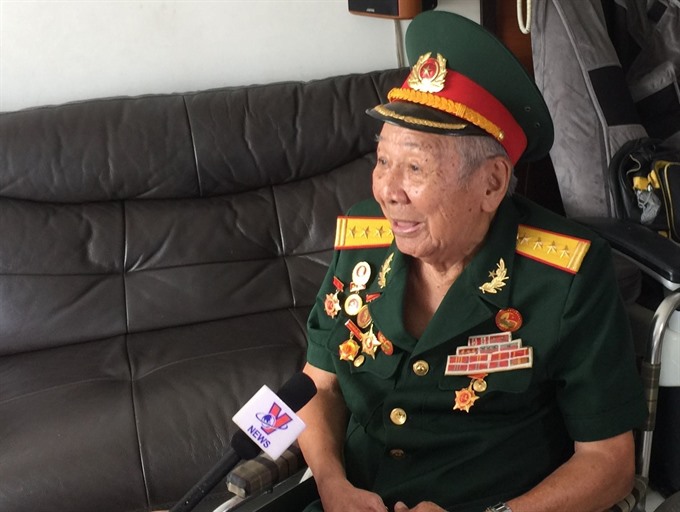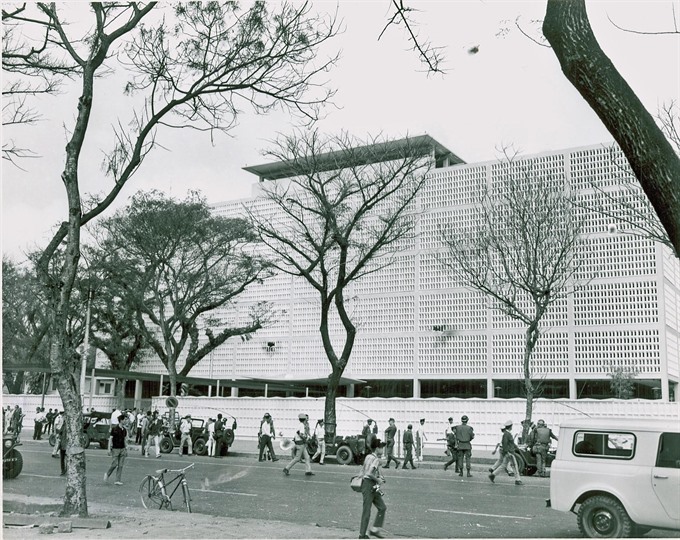 Features
Features

Colonel Trần Minh Sơn, alias Bảy Sơn, former deputy commander and chief of staff of commando force in Sài Gòn-Gia Định recalled his memories of the battle.
 |
| Colonel Trần Minh Sơn, alias Bảy Sơn, former deputy commander of the campaign and chief of staff of liberation commando forces in Sài Gòn-Gia Định. — VNA/VNS Photo Thành Chung |
Hoàng Tuyết
It has been 50 years since the night of January 31, 1968, when Sài Gòn – former name of Hồ Chí Minh City – was rocked by a series of attacks by South Viet Nam liberation forces during the Tết Mậu Thân Offensive. Among which, perhaps none was more memorable than the attack on the US Embassy.
Images of the embassy under siege sent shockwaves around the world and discredited claims carefully crafted by the Johnson administration to mislead the US public that the Việt Nam War was coming to a quick conclusion.
The offensive spurred anti-war movements in the US. On November 15, 1969, the largest war protest in US history took place in Washington, with half a million people in attendance. On January 27, 1973, the historic Paris Peace Accords were signed to end America’s direct combat role and to restore peace in Việt Nam.
Colonel Trần Minh Sơn, alias Bảy Sơn, former deputy commander of the campaign and chief of staff of liberation commando forces in Sài Gòn-Gia Định, recalled his memories of the attacks.
“The embassy was not one of our original targets,” said Bảy Sơn. “The attack on the embassy was added to the plan after a direct order from Sài Gòn-Gia Định region’s party secretary Sáu Dân.”
Sáu Dân was a alias of Võ Văn Kiệt, who later became Việt Nam’s Prime Minister in 1991.
As the team were going over the battle plan, Sáu Dân asked them why the US embassy wasn’t on the attack list.
“Our original plan included the Presidential Palace, the Police Headquarters, TV and radio stations, Chí Hòa Prison and other important targets across the city. Given our numbers, we were already at our limit. There were simply not enough fighters to attack the embassy,” Bảy Sơn said.
“Secretary Sáu Dân insisted the US embassy must be one of our targets. He said we may as well sit out of the Tết 1968 Offensive if we were not going to attack the embassy.”
 |
| Scene outside of the US embassy in Sài Gòn during the Tết Offensive. — Photo US Army Military History Institute |
It’s noteworthy to mention that while generally known as commandos, a notion made popular in post-war era by popular Vietnamese motion pictures such as Sài Gòn Commandos, they were not all soldiers. It is perhaps more accurate to refer to some of them as infiltrators as many were carrying out spy missions and other non-combat tasks and received little to no training in direct combat.
But they had their orders. Bảy Sơn was able to put together a team of 16 led by Ngô Thanh Vân, alias Ba Đen. Among them were ten clerks working at the headquarters. They had five days to train with weapons and to come up with an attack plan on one of the most protected targets in the city.
“In spite of their inexperience with weapons, they all volunteered for the mission. We named them Unit 11,” Bảy Sơn recalled.
Bảy Sơn had another conversation with Unit 11 over tea and fruit preserves. Sixteen members of the unit were celebrating Tết (Lunar New Year) early. It was, after all, a very dangerous mission and they knew that many will not live to see the end of the holidays.
“There was a boy, Vinh, 17. He was our youngest. Vinh was talking about going back home to get married after this mission,” Bảy Sơn said.
“I asked them how ready they were for the mission. Vinh told me not to worry as they were all aware of how dangerous it was and that they were ready to fight to the bitter end.”
In the early hours of January 31, the liberation fighters simultaneously attacked major US forces’ command and control centres across the city. All of the attacks were quickly repelled due to the superior US firepower and their heavily fortified defenses.
But Unit 11 broke through. The commandos entered the embassy compound through a hole in the wall, blown open by an explosive charge. What followed was a deadly and bloody attacks and counter attacks inside the compound that lasted for seven hours.
By the time the siege lifted, 15 members of Unit 11 had been killed and their commander Ba Đen taken prisoner. Bảy Sơn learned of the news on the radio. Vinh was among the dead. The young boy never made it home to his fiancée.
“They all knew the risks and were ready to fight for national cause. That much I know, but my heart ached when their families came to me and asked where their sons were,” Bảy Sơn said.
At the age of 92, Bảy Sơn’s biggest regret was he never knew the real names of all Unit 11 members.
“We all had our alias. I was Seven, they were Five and Eight and Four. Nobody knew each other’s real names or where they came from.”
After the war, Bảy Sơn spent his years looking for the identities and collecting the remains of the fallen soldiers from Sài Gòn battles during the Tết Offensive. It wasn’t an easy task. The secretive nature of their work and the chaos of the 20-year-long conflict made it impossible to track them all.
“It’s a debt I will have to carry to the grave," said the veteran. A tear ran down the cheek of the combat-hardened commando. — VNA/VNS




